After exploring the pagan roots of the midwinter festivals and the dying Sun God, we travel into the darkness of the far north. This is where we’ll find the origins of Christmas, its real meaning, and a hint at our true purpose on this earth.
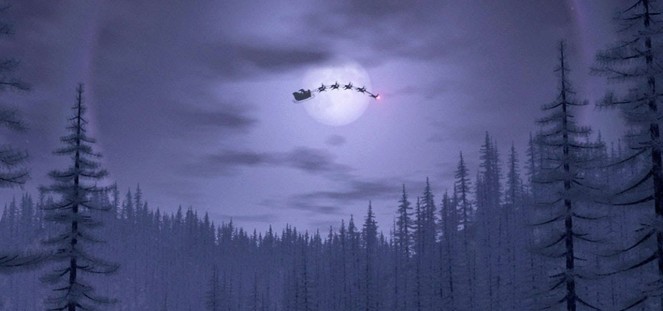
In the first part of this article we found that the birth of Jesus represents the rebirth of the sun after the darkness of midwinter. In the northern hemisphere, this cosmic metaphor can be observed on 21st December when the sun appears to rise to its lowest point in the sky. It rises in the same spot for three days, and then on 24th December resumes its ascent. The Sun King is reborn!
This myth is about renewal and the hope that life will continue and be reborn in the spring. It’s often interpreted literally, in the sense that the community will survive the harsh winter, the crops will flourish, and families will be fruitful. But it has an inner meaning too.
The transformation of rebirth is a shamanic act, and the myths point towards consciousness and the awakening of our true nature.
What does this have to do with Christmas trees, presents, flying reindeer, and a jolly fat man in red and white? The answer is that all of these things are shamanic in origin.
Santa is a Shaman
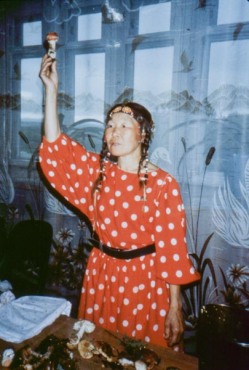
Many of the tribes in Siberia have shamanic practices that survive from prehistoric times. These include the ceremonial use of entheogens derived from the Amanita muscaria, or Fly Agaric mushroom. The shamans dress in red and white, and gather the mushrooms using a sleigh pulled by reindeer. In the harsh conditions of midwinter, the shaman would serve the community by visiting each home to perform ceremonies. They distributed the dried mushrooms and guided the recipients through the experience.
The mushrooms would be carried in a sack, and if the front door of the yurt was snowed in, the shaman climbed in via the smoke hole in the roof. The freshly harvested mushrooms would sometimes be hung by the fire in socks to dry them out over night. Or to make them easier to carry, the shaman would dry them out whilst harvesting them by placing the mushrooms in the branches of a fir tree where they would dry in the sun.

If you imagine a fir tree covered in red and white mushrooms, it’s easy to see how this might resemble a Christmas tree decorated with baubles. In fact, some of the oldest Christmas ornaments were red and white, and they were often edible too. Apples were hung in the tree to symbolise the fruit of the Tree of Knowledge, and these were later replaced by shiny red balls.
So here we have the symbol of a man or woman dressed in red, who travels on a sleigh to deliver ‘presents’ carried in a sack, and climbs in via the chimney. The shamanic Santa was often a shamaness, and this has come down to us as the myths surrounding Holda who we met in part 1. She is found in the folktales of northern Europe and travels in a carriage delivering presents on Christmas Eve.
Which brings us to the flying reindeer.
The Fruit of the Tree
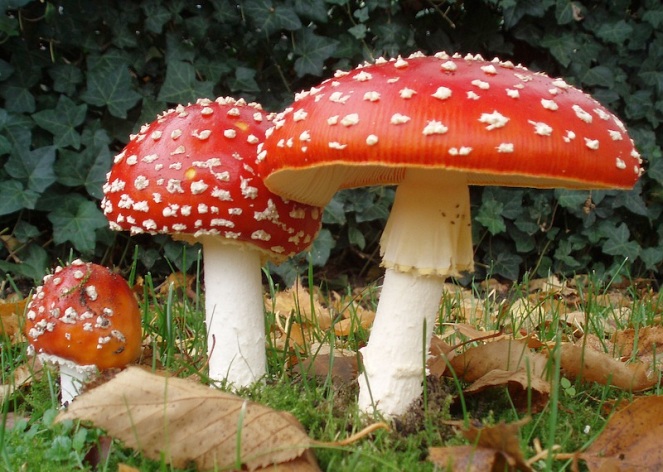
The Amanita group of mushrooms can be found around the world with types that range from perfectly edible to deadly poisonous. The Amanita muscaria type contains the psychoactive chemicals muscimol and ibotenic acid which have toxic side effects if the mushrooms are eaten fresh. They grow around the roots of certain evergreen trees, such as the pine, birch and oak, and are found in Russia and all over Europe.
The toxic substances cause chills, sweating, salivation, nausea and vomiting, but if the mushrooms are dried or boiled these effects are reduced. The positive, psychotropic effects of the mushroom include visions and altered states of consciousness, a sense of euphoria, impaired balance, and clarity of mind.
Reindeer are known to enjoy eating these mushrooms. They seek them out and will even dig through snow to reach them. After snaffling the mushrooms they stagger about, wild eyed and deliriously happy (presumably!). Humans who ingest the Amanita muscaria report sensations of flying. Nobody is sure how the reindeers feel under the influence, but they wouldn’t eat them if they didn’t like it!
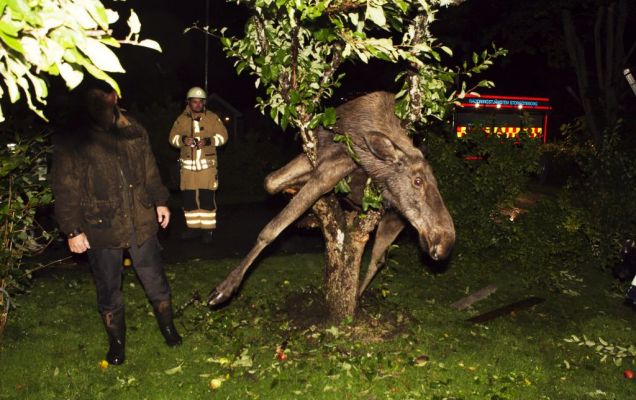
So now we have our flying reindeer, but there’s more to be said about these mushrooms. The use of entheogenic plants is arguably considered to be the origin of religion, so let’s take a closer look at these mushrooms.
The Amanita muscaria only grows around evergreen trees and they have a symbiotic relationship, feeding nutrients to each other. The mushrooms can’t grow without the tree and are seen as the fruit of the tree.
They start their growth cycle in an egg form, then the red cap bursts through the top. As it grows larger, the cap flattens to form a disc-like surface, and then it slowly inverts, the sides turn upwards and it forms a cup shape. Once it gets to this stage it’s almost at the end of its cycle. The cap lifts and resembles wings, and then it collapses in on itself and decomposes leaving nothing but the white filaments, or mycelium, which attach to the roots of the tree, where the cycle starts again.
The lifecycle of the mushroom itself embodies the birth/death/rebirth cycle that it symbolises, and it’s sometimes likened to the mythical phoenix. This is the bird that is reborn from its own ashes, but never leaves the nest. As soon as it tries to fly away, it bursts into flame and dies, only to be reborn again – over and over and over.
Shamans use these sacred plants for healing, meditation, communicating with the ancestors and spirits, and for undergoing rites of passage. The shamanic vision provides training for the afterlife and brings the shaman into direct contact with the truth about who we are. This is why the mushrooms are called the Fruit of the Tree. The Amanita muscaria, and other entheogenic plants, are the forbidden fruit of the Tree of Knowledge. They weren’t always forbidden and the story behind their suppression is a long and sorry tale. But the good news is that the truth is hidden in the myths and stories that we still celebrate every year at Christmas.
The Oldest Religion
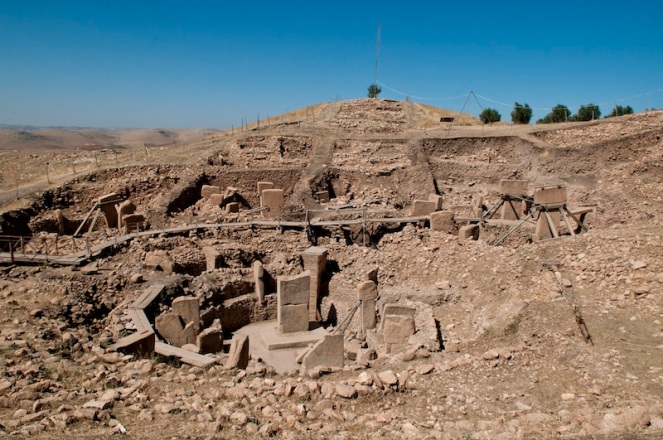
Before the Sun Gods rose to prominence, another religion was practiced around the globe. Its form varied depending upon the culture, but each had certain key factors in common. This prehistoric religion was centred on the Goddess and the Moon, and its main focus was the cycle of birth, death and rebirth. Gobekli Tepe in Turkey may be the oldest temple dedicated to this religion that has been found so far, dating back to around 10,000 BCE at the end of the Ice Age.
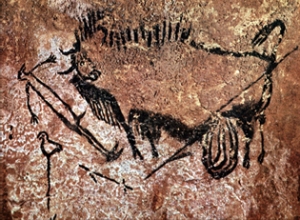
The roots of this religion stretch back into Palaeolithic times when the Pole Star was venerated. The Pole Star is a fixed point in the sky because it’s aligned with the Earth’s axis and sits close to the celestial pole. At the moment, this star is Polaris, which can be seen directly overhead at the North Pole, but due to the wobble of the Earth’s axis the pole star changes over time. Around 16,000 BCE the pole star was Deneb in the constellation of Cygnus. Cave paintings at Lascaux have been found that illustrate this connection.
The Pole Star cults are also known as the Pillar religion. They called the highest point in the sky “the throne of the most high”, and it was seen as the top of a holy mountain, or the sacred mound. This sacred mountain was the “Axis of the Universe” or the World Tree, the central pillar around which the entire universe revolved.
The cosmic axis of the World Tree has roots which reach down into the underworld, the trunk is the everyday world or ‘middle earth’, the branches reach into heaven, and the tip of the tree touches the pole star. During ceremonies, the spirit of the shaman climbs the World Tree and passes into the realm of the ancestors and the gods. Once there, the shaman can heal, gather information, and prepare for the ultimate journey – death. One example from myth: Odin (another shaman) hung upside down from the Yggdrasil to gain insight into the mysteries of life.
The links with Christmas and the midwinter festivals are obvious. The Christmas tree is the World Tree complete with a star on top. Santa the shaman lives at the North Pole and flies around the world in 24 hours. The stars which circle the pole complete the circuit once everyday. One of these constellations is the Big Dipper, or Ursa Major, which is seen as a wagon or cart in many cultures. This is the chariot used by Odin and Holda to travel across the sky, and may just as well be called Santa’s sleigh.
The True Meaning of Christmas
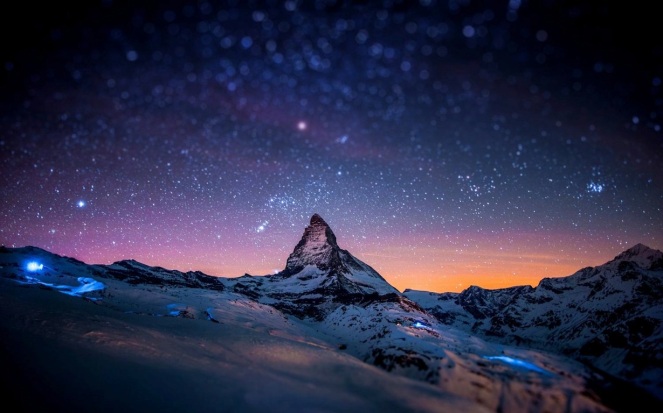
The Pole Star cults of the Pillar religion were overthrown by the Sun Gods and the patriarchal religions grew to dominate the world. But many of the old shamanistic elements of the goddess cultures were incorporated into the mythologies of the new religions. The men and women who created the original myths had a profound understanding of spiritual truths and these were encoded into the stories for us to discover. Although the true meaning of these ancient myths has been suppressed and trivialised (and branded evil by some), it continues to seep through the traditions of Christmas, albeit in a distorted form.
Let’s look at the main elements of the myth and the meaning of the symbols.
Imperishable Stars
The entire mythology is a metaphor for awakening to our true nature. This is stated as a belief that we are destined to return to the realm of the immortal stars that circle the pole. We reach the stars by climbing the Tree of Life and then travel along the Milky Way to arrive at the Pole Star. For example, in Egyptian mythology it was believed that the pharaoh ascended to the imperishable stars where he joined the gods.
“O You Who are high in the stars, You shall never die.” – The Ancient Egyptian Prayer Book
The stars circling the pole are considered to be immortal because they never set. They represent divine love which is always present and is our true nature.
Sacred Mounds
Sacred mountains are found in religions all over the world and they’re often seen as the home of the gods: Mount Parnassus and Olympus (Greek), Meru and Sumeru (Hindu and Buddhist), Zion (Hebrew), and Kunlun Mountain (Taoist). Myths often portray people going up mountains to receive religious instruction or spiritual insight from the god or gods. The top of the mountain touches the pole star and so represents eternal life, and to travel to the top means to gain insight into our divine nature.
World Axis or Tree
Holy mountains are the pillars of heaven and the axis around which the world turns. The World Axis is often represented by ziggurats, obelisks, djed columns, pyramids, and steeples. Symbolically speaking the pillar is the spine. This can be seen most clearly with the djed column in Egyptian mythology, which is also seen as a sacred tree. It represents the backbone of Osiris and is sometimes depicted with a winged solar disc at the top. Scroll through the gallery below for some examples:
There are many representations of the World Tree and the Christmas Tree is the most recent. The Tree of Life is an esoteric symbol for the energy system of the body. The chakras, or energy vortexes, are rooted on the spine and the process of awakening involves the Kundalini serpent rising up the spine to the crown chakra at the top of the head.
So the Christmas Tree actually represents the process of awakening: the tree itself is the spine, the angel or star at the top is the opening of the crown chakra, and the tinsel is the serpent winding its way to the top!
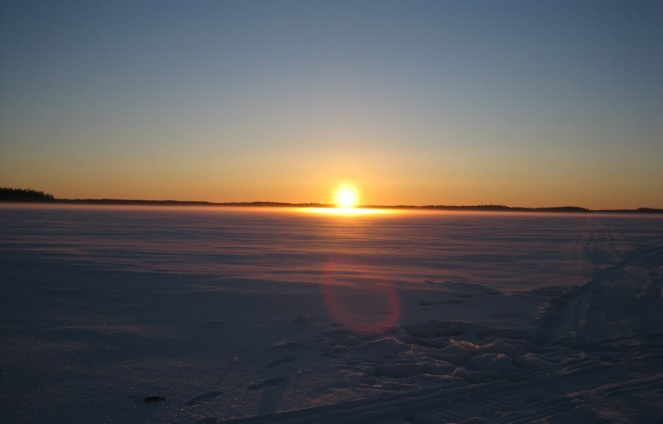
Ultimately all religions and all mythology tell one story – the tale of our death and rebirth. We are here to evolve our consciousness so we can remember who we are, and this development is essential to the evolution of the universe. The unconscious wants to become conscious and it can only do that through us – through human consciousness.
These myths help us to remember and point us towards the realisation of our true nature as essentially divine and at one with the cosmos. Midwinter is the perfect time to wake up.
Christmas is a liminal place and magic is in the air. If you look up to the stars, who knows what you might see!
 Oh, and here’s the perfect story to read over the holidays – Addled: Adventures of a Reluctant Mystic – all about awakening from a Zen perspective. A book full of humour, music, meditation, extravagant facial hair, and profound questions about life. Available in paperback & on Kindle.
Oh, and here’s the perfect story to read over the holidays – Addled: Adventures of a Reluctant Mystic – all about awakening from a Zen perspective. A book full of humour, music, meditation, extravagant facial hair, and profound questions about life. Available in paperback & on Kindle.
Whatever you’re doing this holiday season, I hope you have a good time (and don’t end up in a tree!). I’ll be back in the New Year, reborn and ready for another turn around the sun next year.
Merry Christmas!
Images: Shaman; Xmas Tree; Drunk Moose; Mushrooms; Gobekli Tepe; Lascaux; Gallery: Djed, Totem, Caduceus, Chakras; End of Polar Night
Thanks for reading! To support my work, donate below 🍵. Thanks in advance! 🙏❤️


Dayum. That was really something that was really provocative and insightful. It’s my first time hearing most of what you’ve said, which just goes to show the disparity between the truth and what is being projected. Thanks for this awesome post!
LikeLiked by 1 person
Glad you enjoyed it!
LikeLike
Excellent post Jessica – very informative
LikeLike
Thanks Spencer. Glad you enjoyed it.
LikeLike
Reblogged this on Jessica Davidson and commented:
Part 2 of my exploration into the real meaning of Christmas – where we journey into the far north and the distant past, and discover ancient symbols that still have meaning for us today. You’ll never look at a Christmas tree the same way again…
LikeLike
Wow, what a powerhouse of wisdom. I have heard heard bits and pieces of these mythologies, but it’s the first time I have read about them in such an eloquent and comprehensive manner. Many thanks and many season’s blessings.
LikeLiked by 1 person
Thanks Leeby Geeby and Merry Awakening to you!
LikeLiked by 1 person
Your welcome!
LikeLiked by 1 person
I absolutely loved this brace of posts. Truly fascinating and enthralling. Thanks for sharing, (and enlightening). Happy Christmas!
LikeLiked by 1 person
Thanks David. I’m glad you enjoyed them and Merry Christmas! 🙂
LikeLiked by 1 person
One method the Sami and Koryak used to neutralise the toxins in the mushrooms was to feed them to reindeer then collect their urine and drink it. Apparently the poisons are largely metabolised by the deer but most of the psychoactives pass through their system unchanged.
Do you suppose that’s the origin of the traditional Christmas piss up? 😉
LikeLiked by 2 people
Ha ha! Perhaps…😜
Thanks for adding this detail, cabrogal. I wanted to say so much more in this post, but it was already getting quite long. Apparently you can ‘recycle’ several times – the psychoactive elements take a while to pass out of your system, so you can start with a refreshing draft of reindeer piss, and then drink your own.
This may be the meaning behind turning water into wine!
LikeLiked by 1 person
So many interesting things in these two posts. Thanks for researching it all for us, you write well – and it reminds me I forgot to mention I bought Addled. A mystical experience in our ordinary world. Great!
LikeLiked by 1 person
Thanks, tiramit. I had fun researching it – some of it I knew already (mostly the pagan stuff and a little of the shamanism), but I hadn’t made the connection between the World Tree and the Christmas Tree. So obvious once you see it!
I’m glad you enjoyed Addled too. Thanks for taking a risk and giving it a go. A little review would be much appreciated, if you’re willing. I love reading the posts on your blog – you have a beautiful way with words, and such presence and attention to detail – like stepping into peace in the midst of this crazy world!
LikeLike